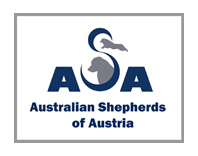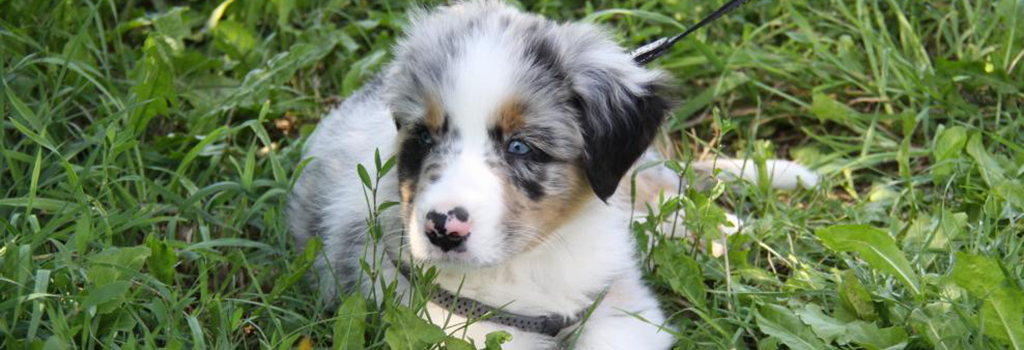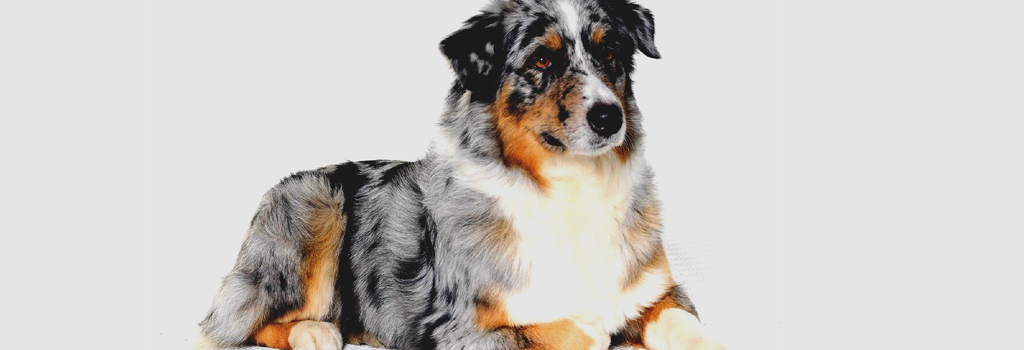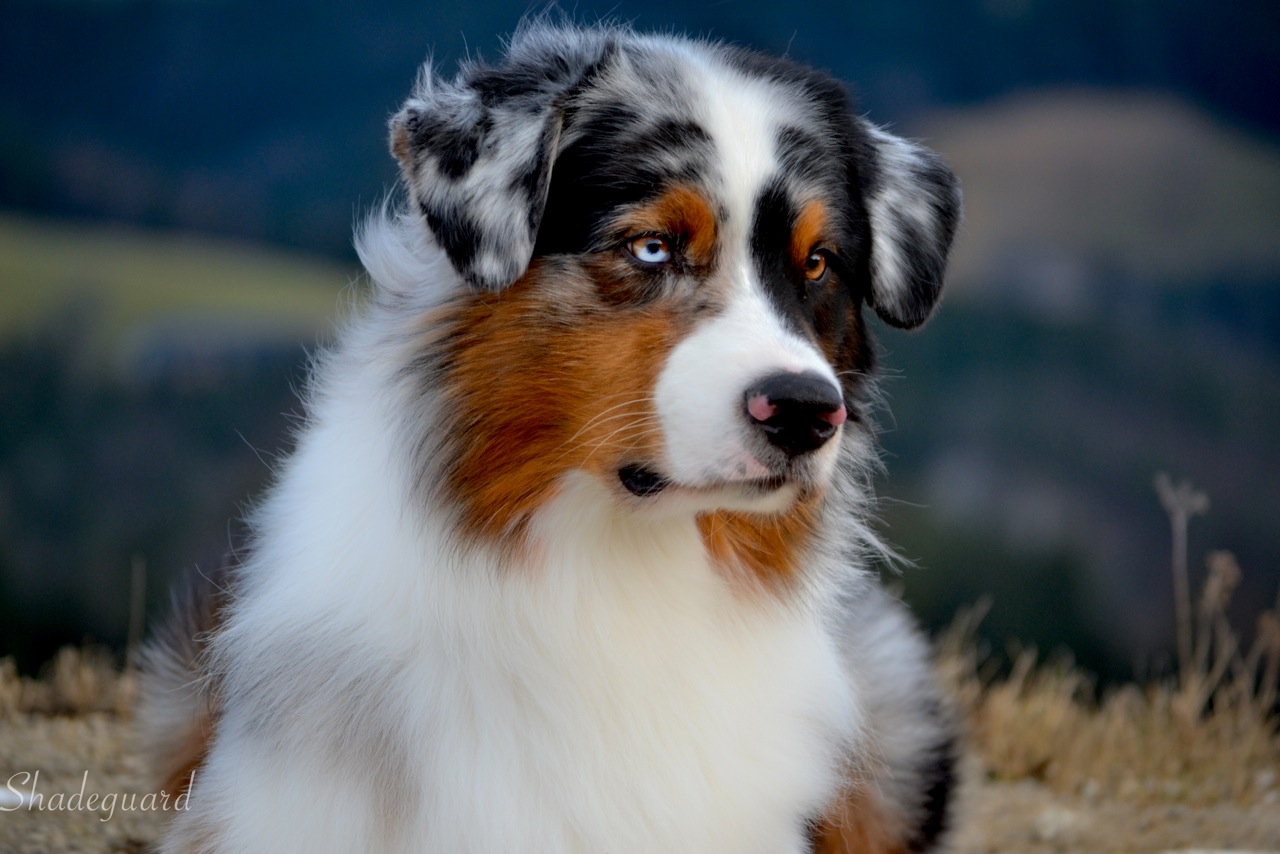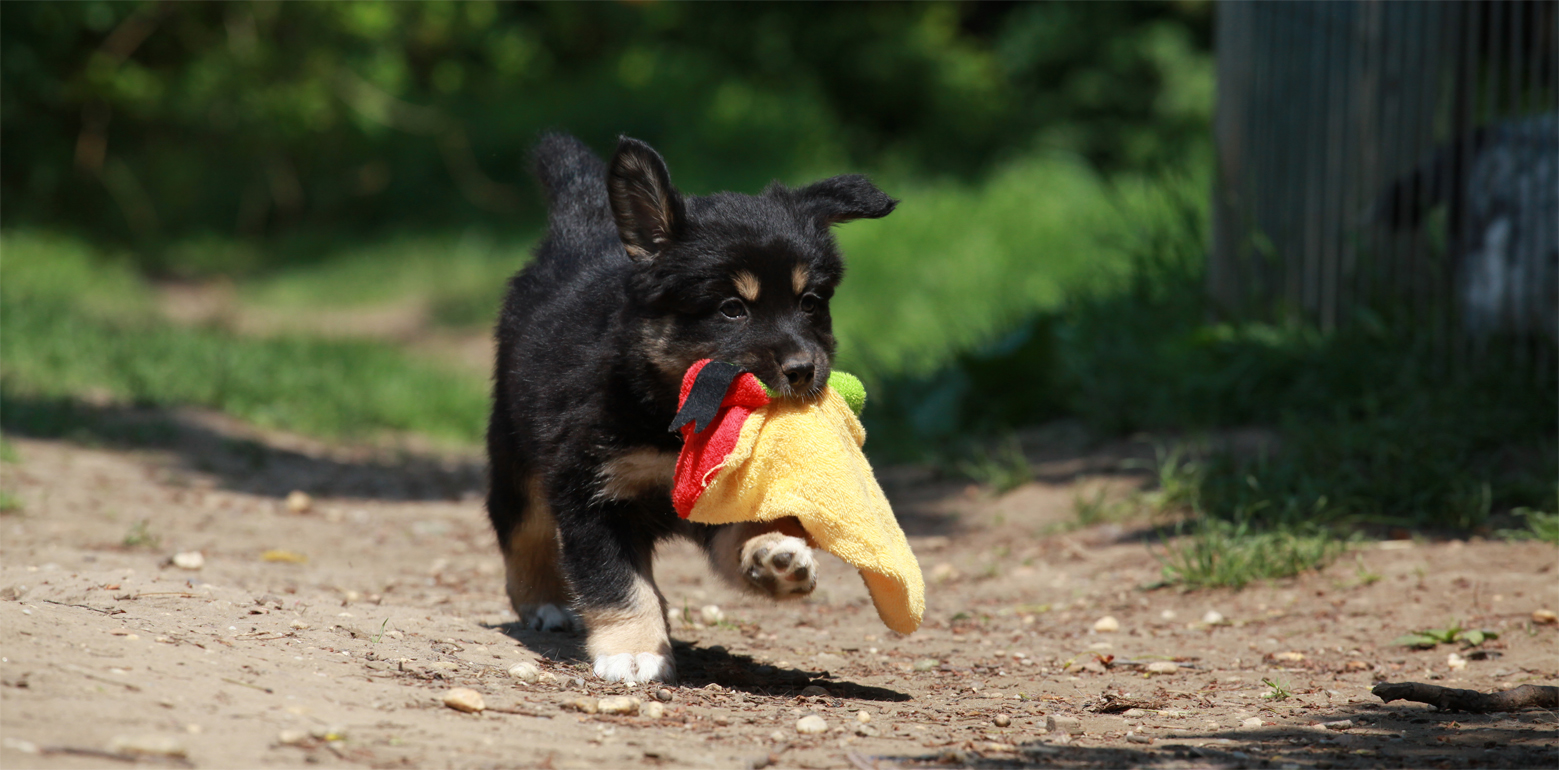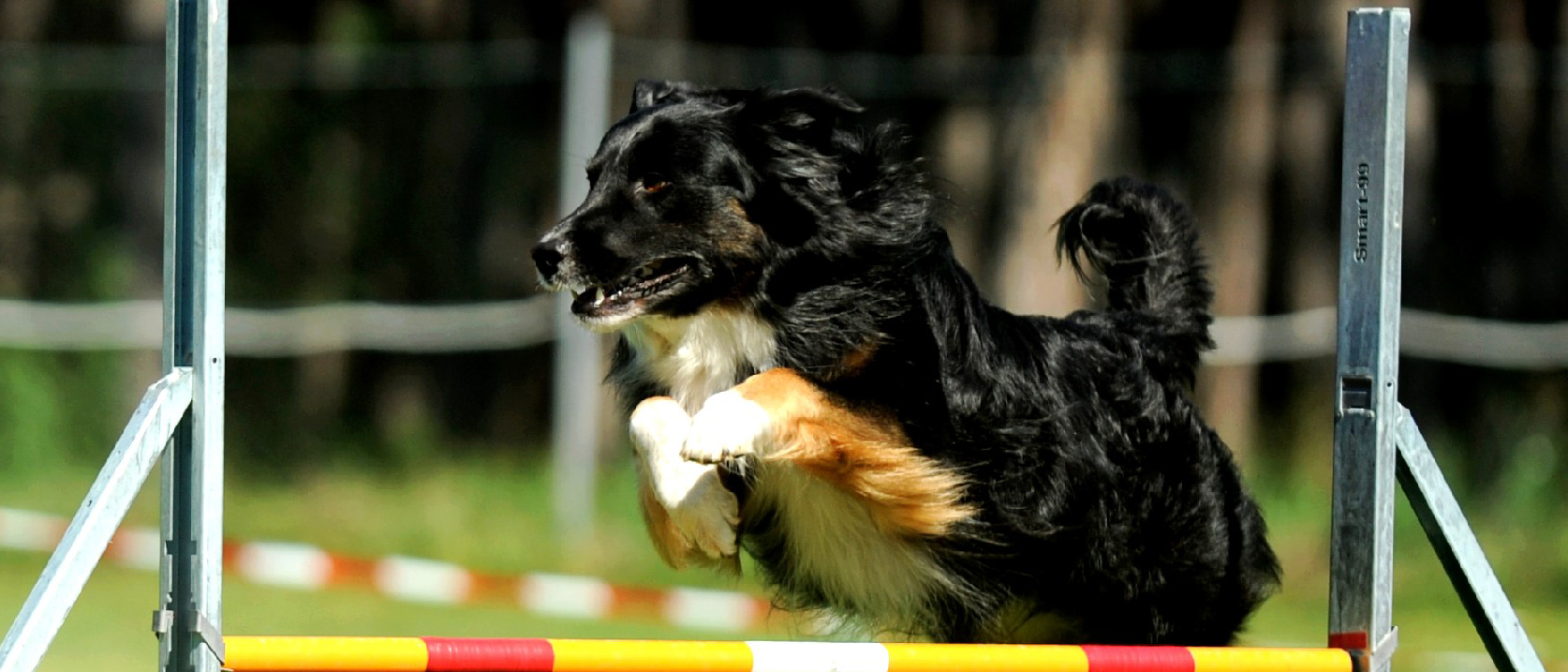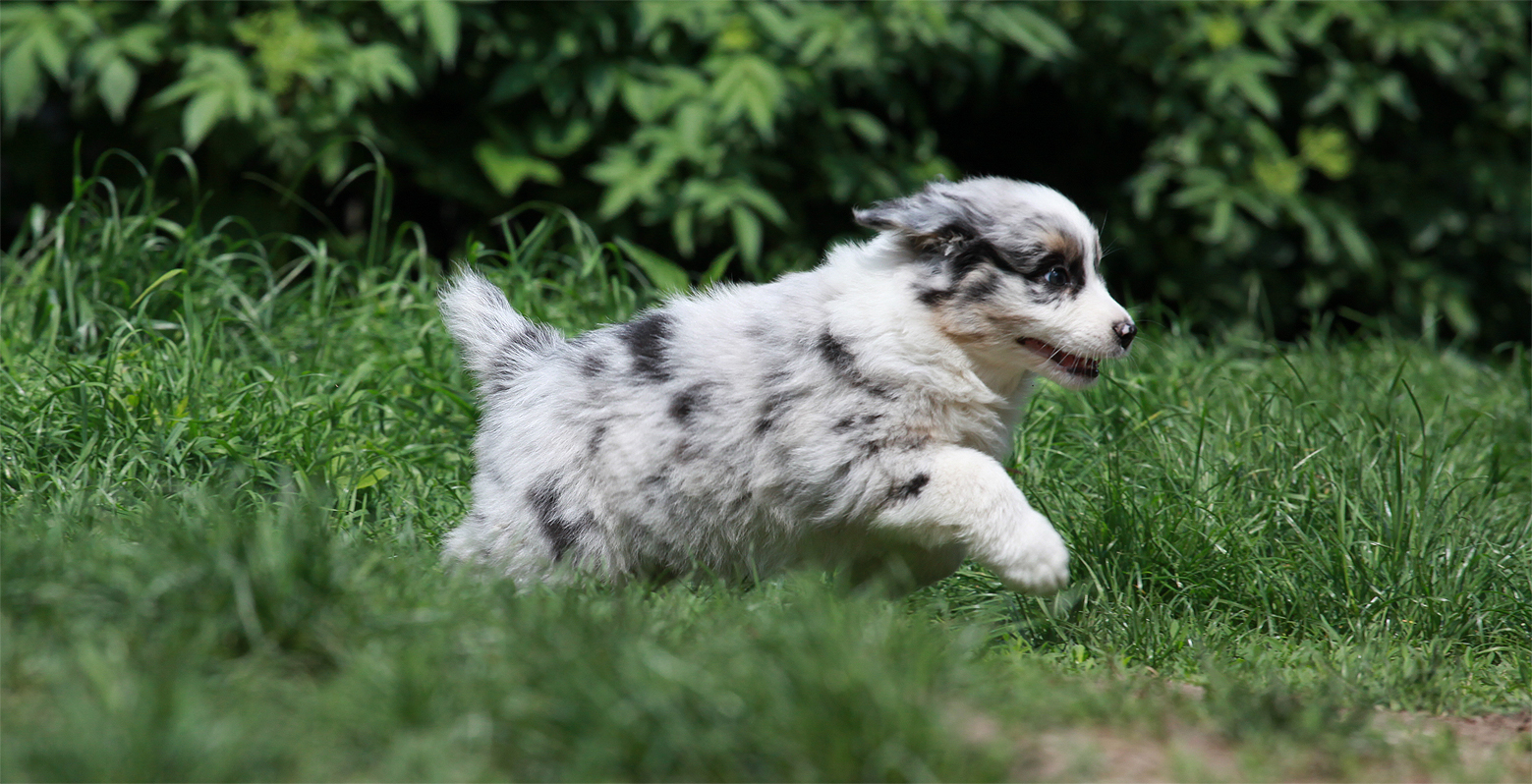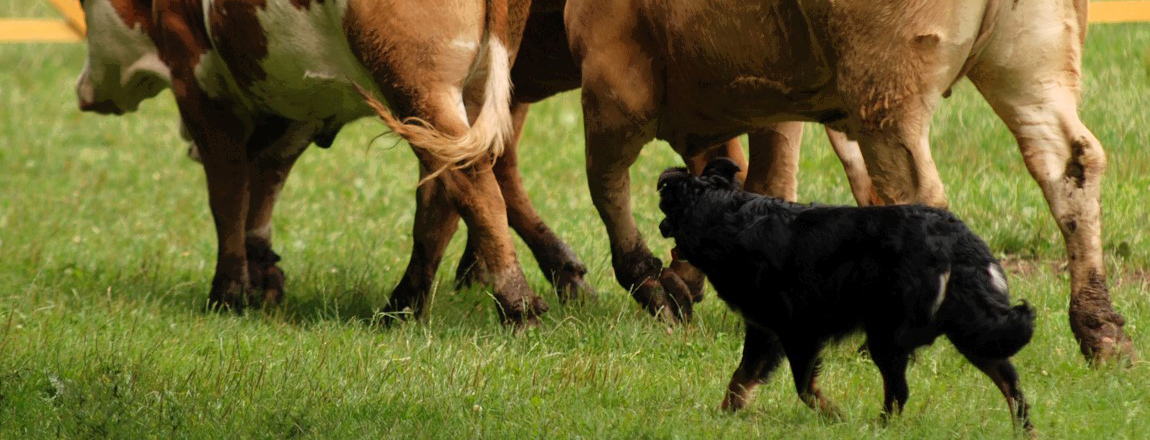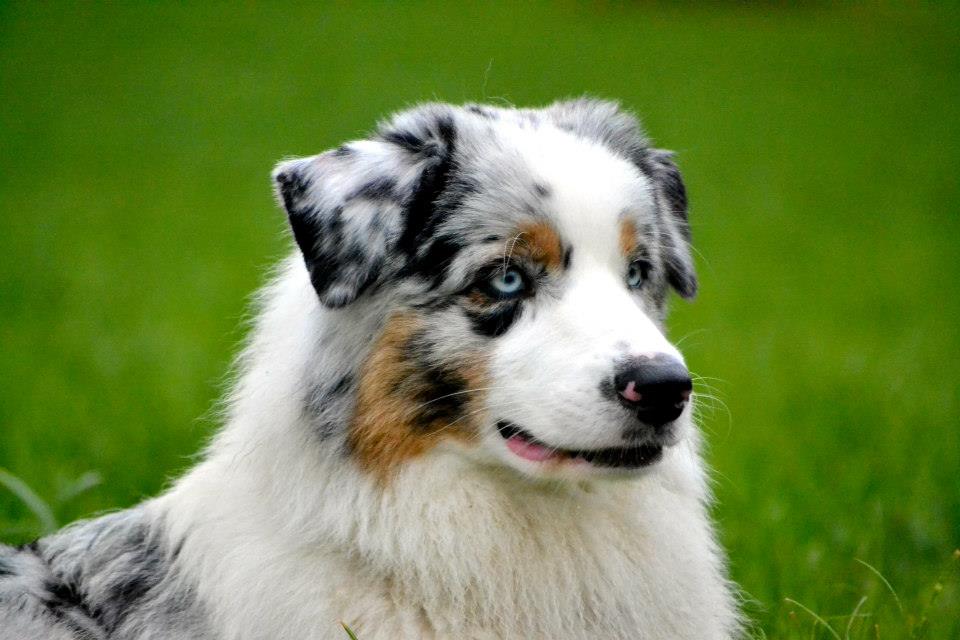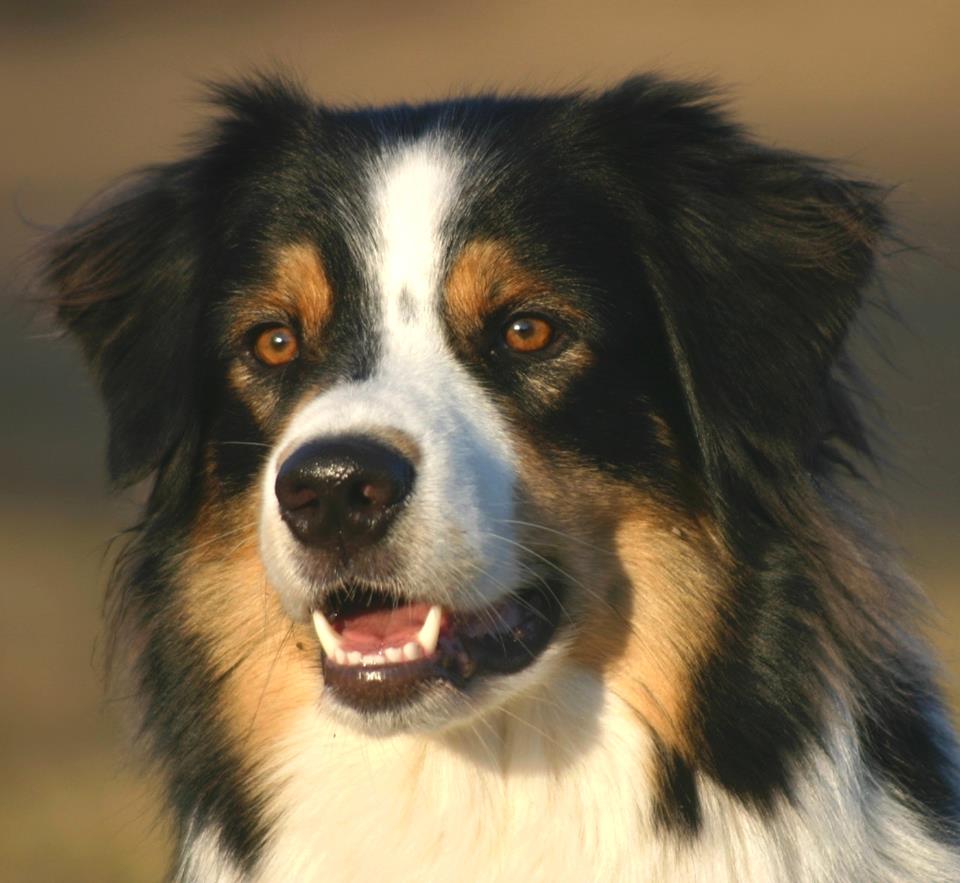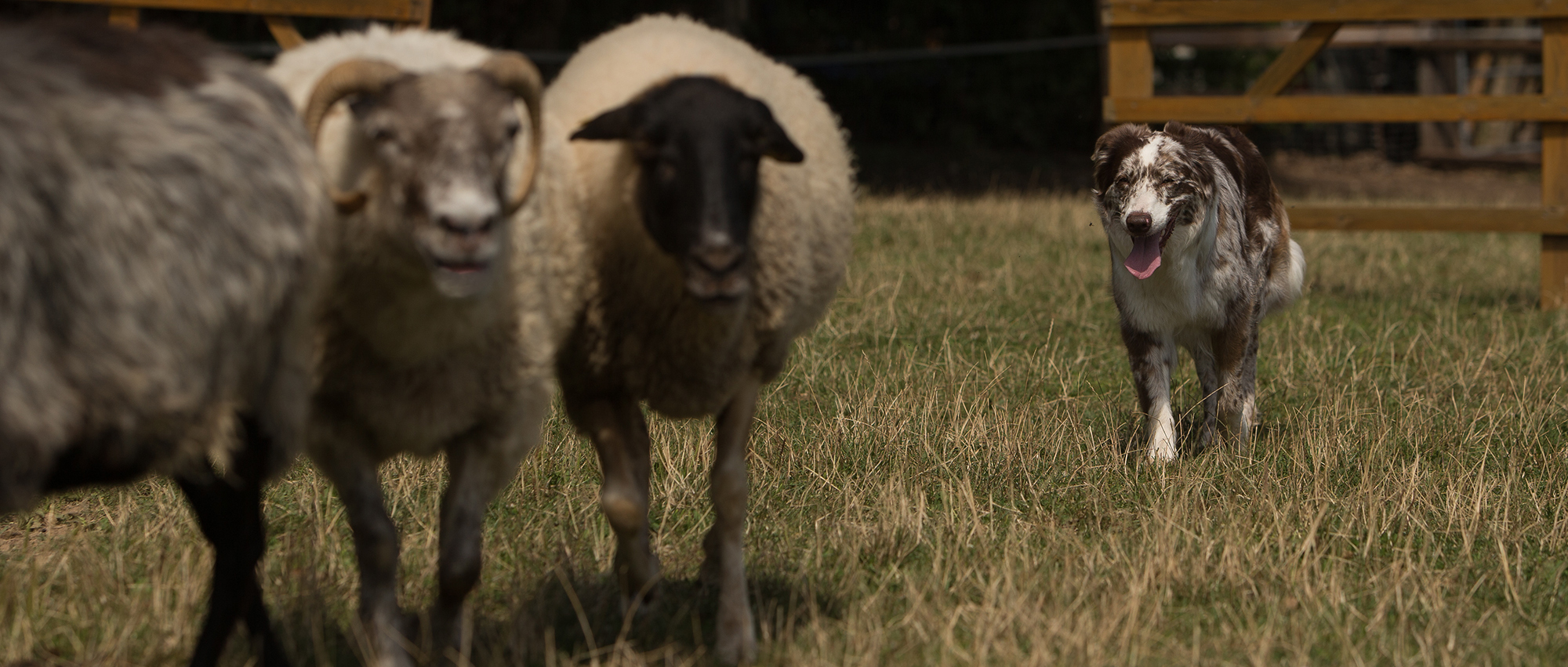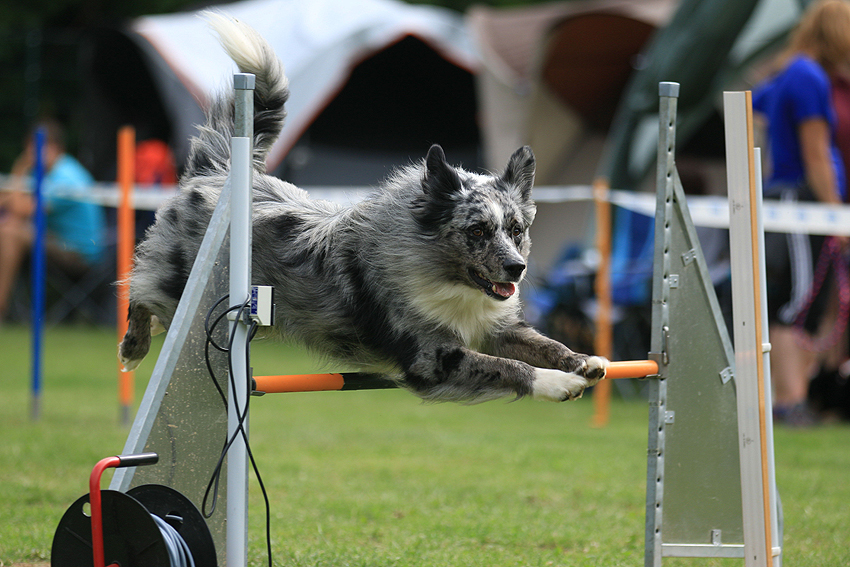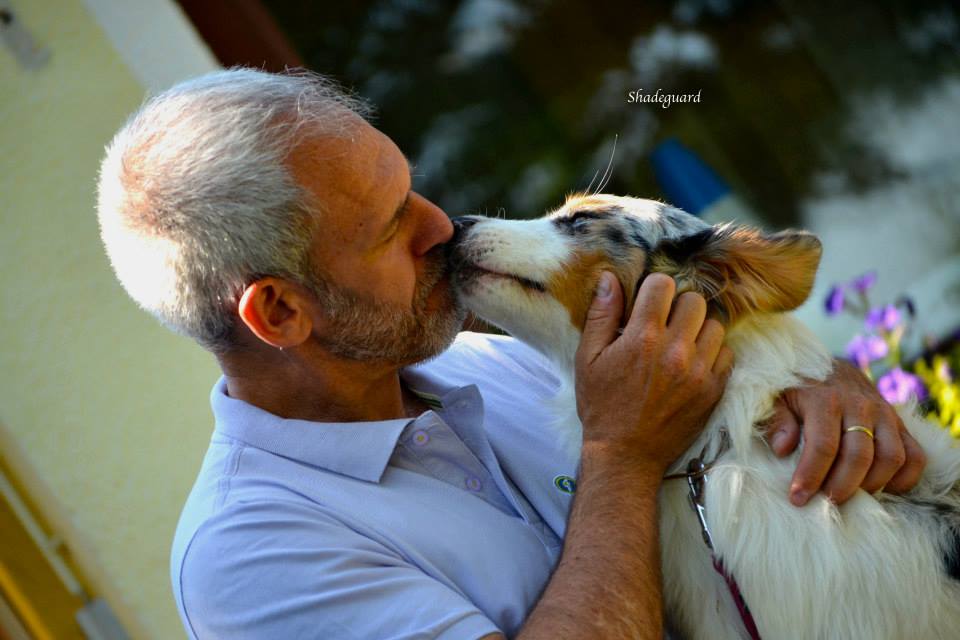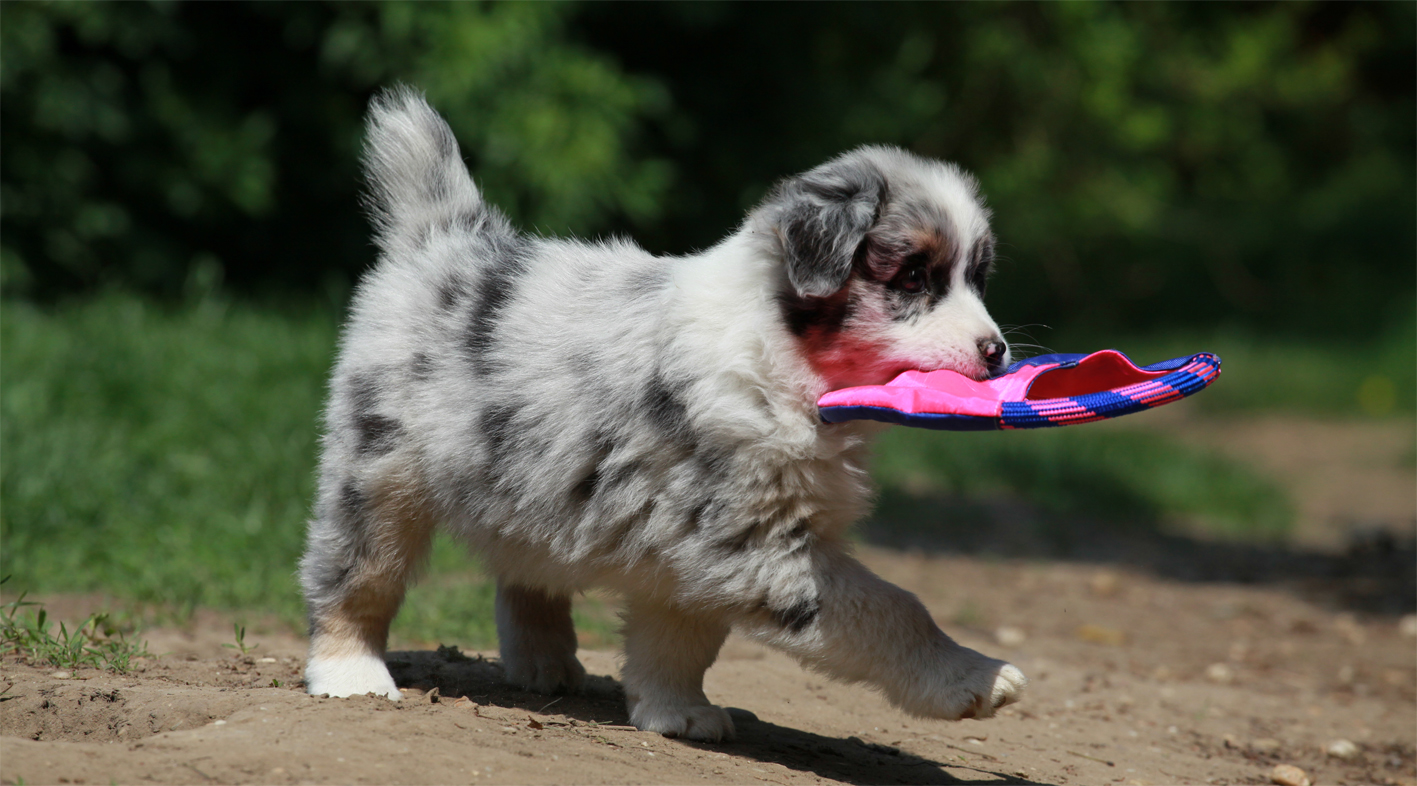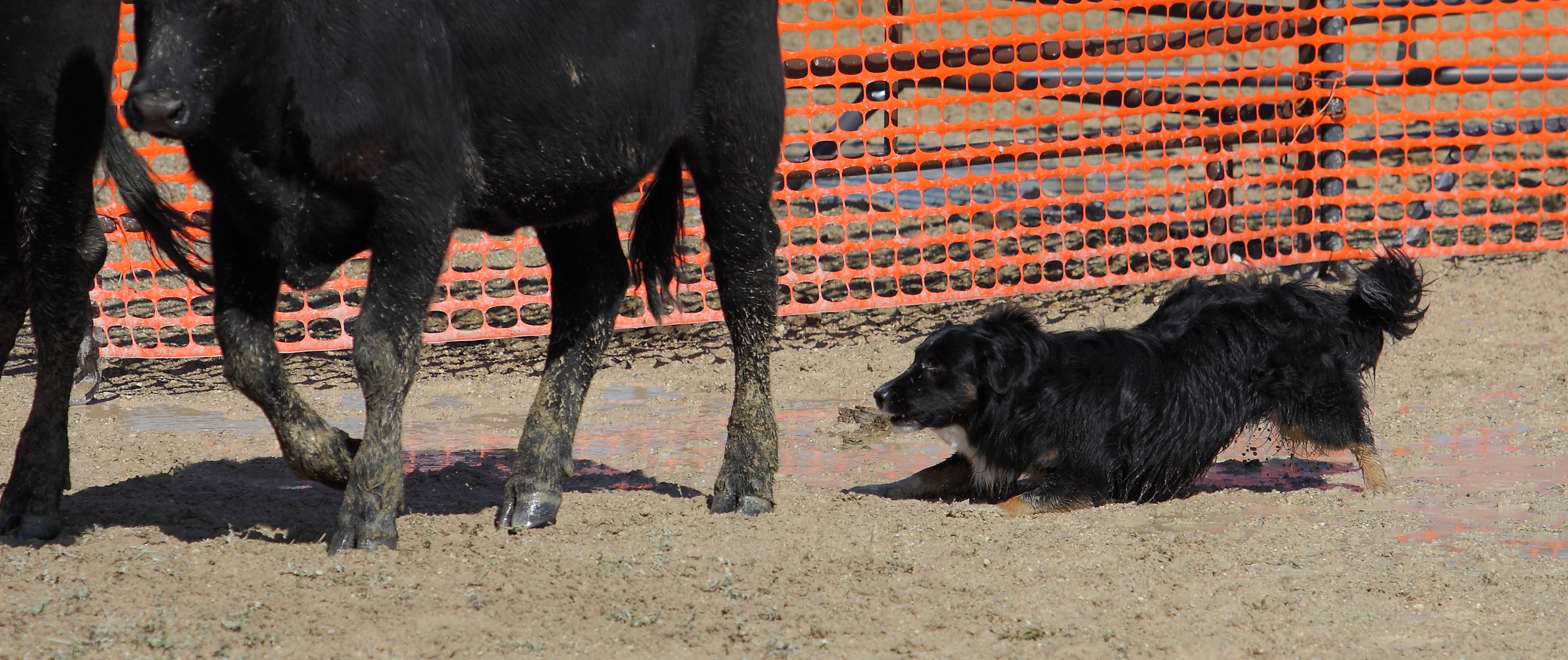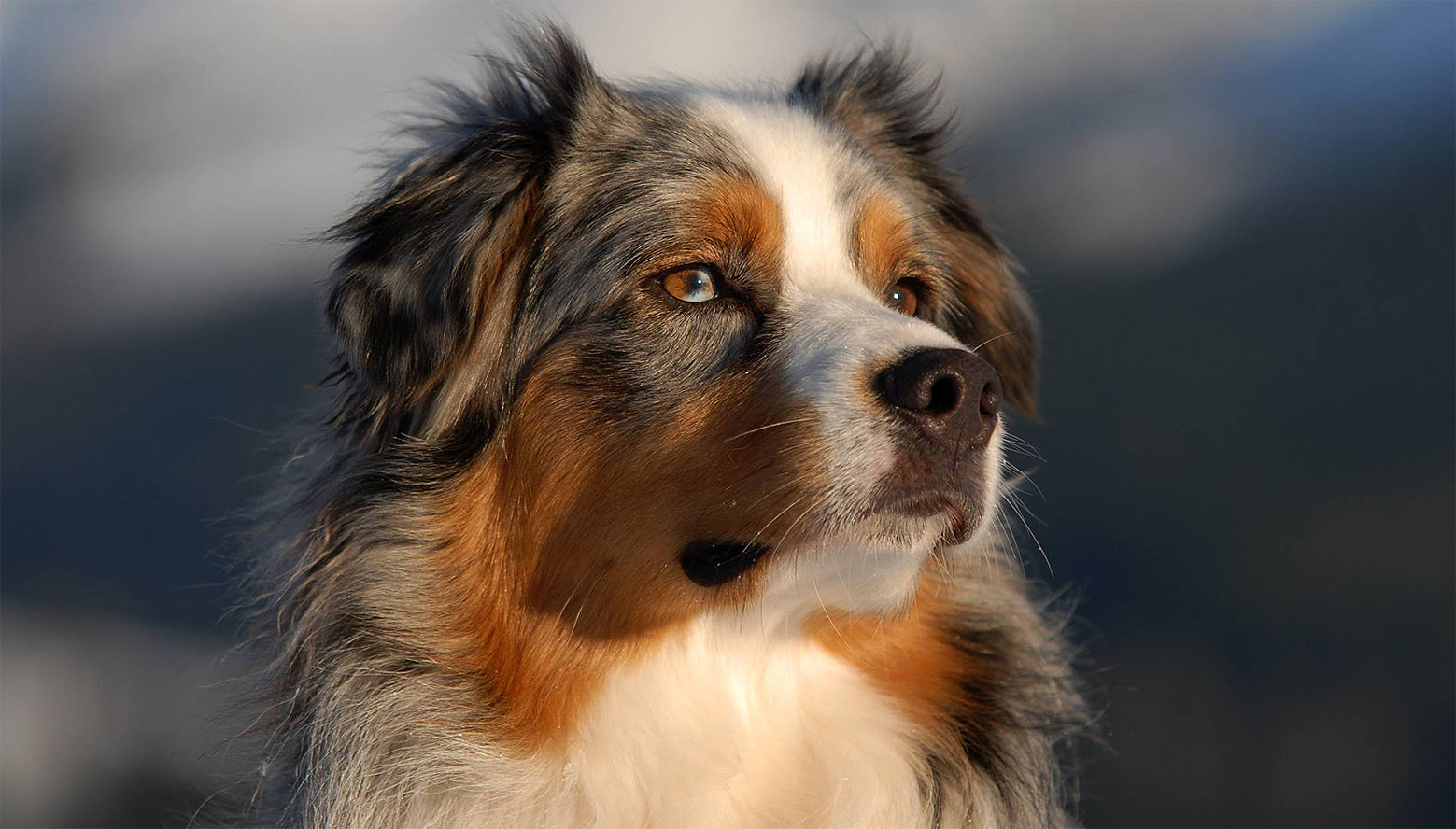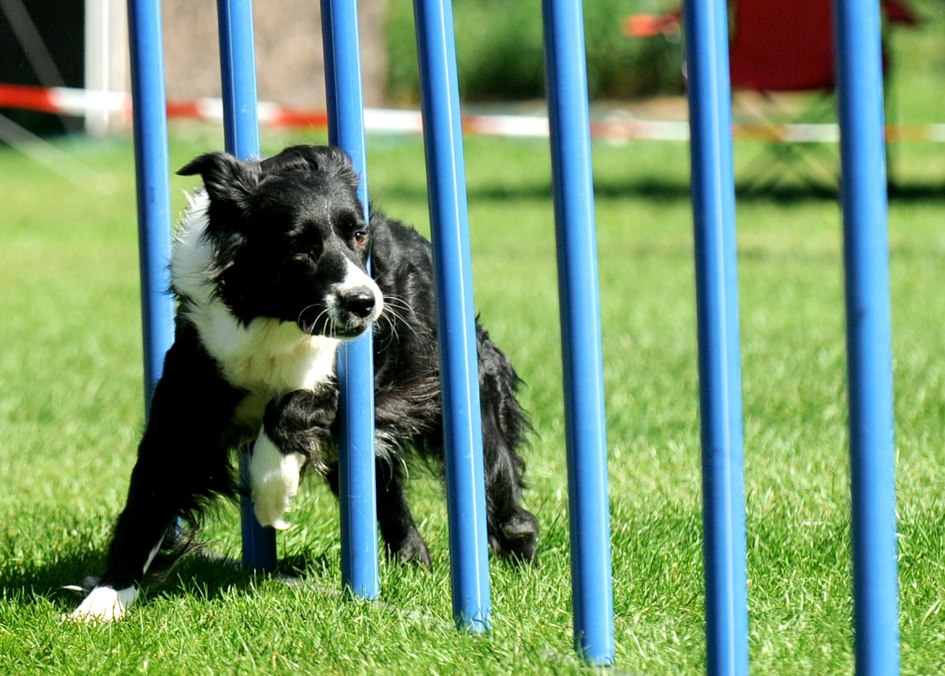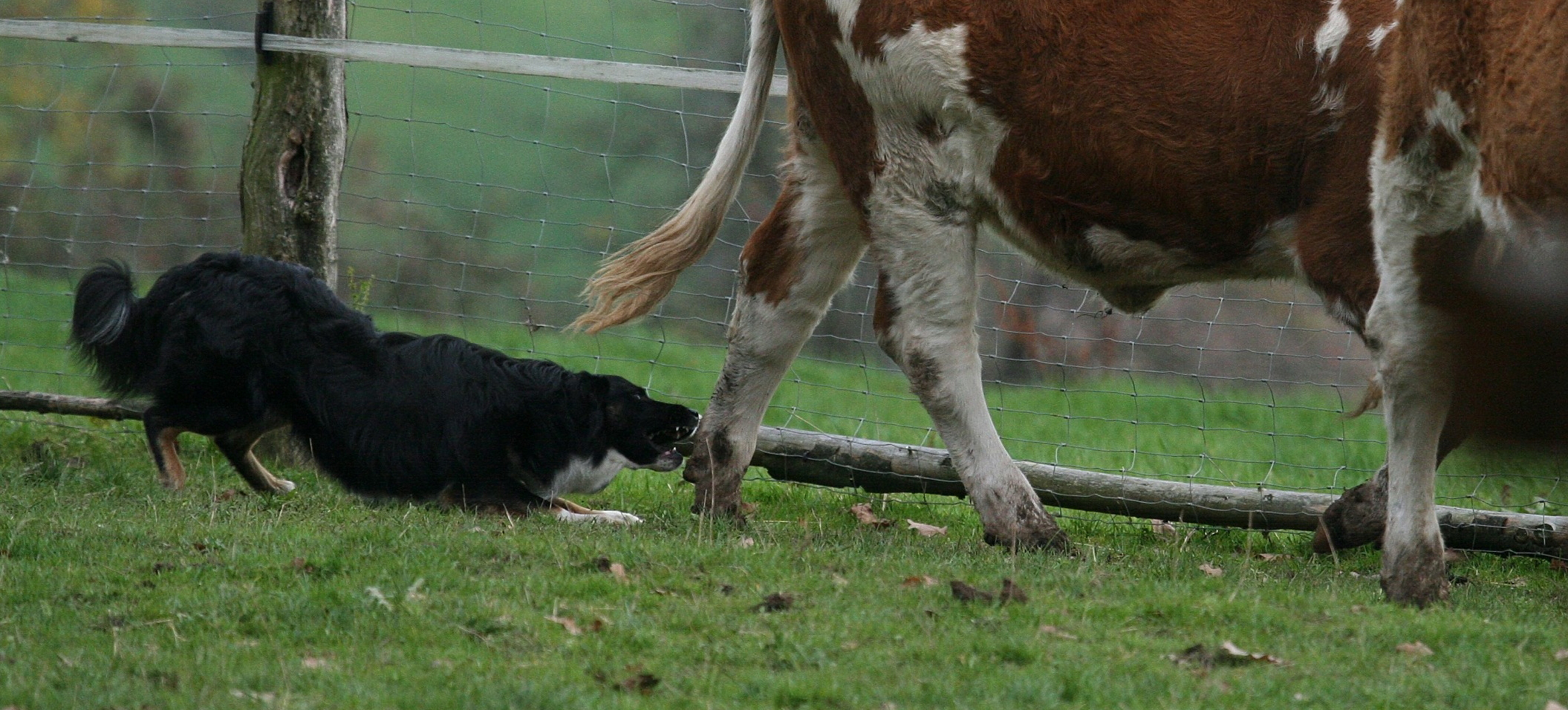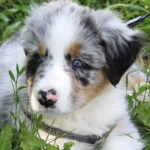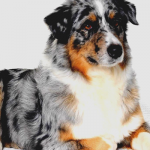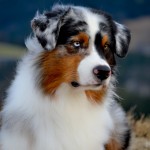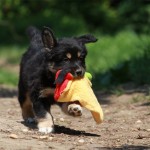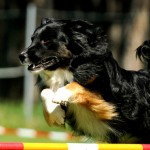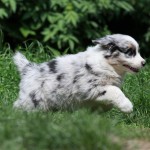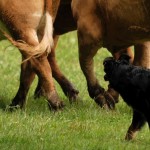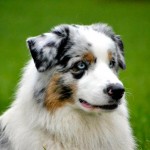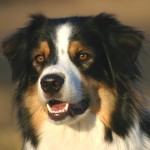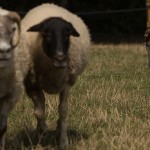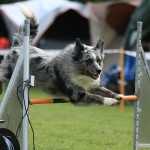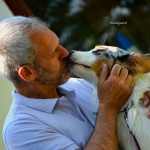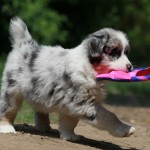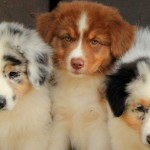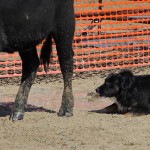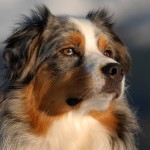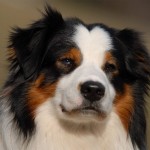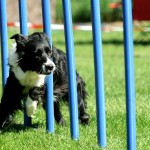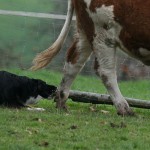FCI – Standard Nr. 367
MINIATURE AMERICAN SHEPHERD
URSPRUNG : U.S.A.
DATUM DER PUBLIKATION DES GÜLTIGEN ORIGINALSTANDARDES: 04.09.2019
VERWENDUNG : Farm und Ranch Hűtehund
KLASSIFIKATION FCI: Gruppe 1 Hütehunde und Treibhunde (ausgenommen Schweizer
Sennenhunde), Sektion 1 Schäferhunde, Ohne Arbeitsprüfung.
BRIEF HISTORICAL SUMMARY: The Miniature American Shepherd was developed in California during the late 1960’s with the breeding of small Australian Shepherds. These dogs were bred with a goal of maintaining their small size, active character and intelligence. The breed was first registered with the National Stock Dog Registry in 1980 and was originally called the Miniature Australian Shepherd. By the early 1990’s, they had attained nationwide popularity and were shown in various rare-breed organizations. The first parent breed club and registry, MASCUSA, was formed in 1990 and incorporated in 1993. The breed entered the AKC Foundation Stock Service as the Miniature American Shepherd in May 2011. The Miniature American Shepherd Club of the USA (MASCUSA) is the designated national parent club of the American Kennel Club. The breed has been used for herding smaller stock such as sheep and goats, although they have the heart to tackle larger stock as well. Their small size was looked upon with favor, as they could more easily double as a household pet. They became especially popular with equestrians traveling to horse shows, as their intelligence, loyalty, and size made them an excellent travel companion. In this way their popularity spread across the country. Today, the Miniature American Shepherd is established across the U.S. and internationally. It is a breed with a unique identity – an eye catching, versatile little herding dog, equally at home on a ranch or in the city.
GENERAL APPEARANCE: The Miniature American Shepherd is a small size herding dog that originated in the United States. He is slightly longer than tall with bone that is moderate and in proportion to body size and height without extremes. Movement is smooth, easy, and balanced. Exceptional agility combined with strength and stamina allows for working over a variety of terrain. This highly versatile, energetic dog makes an excellent athlete with superior intelligence and a willingness to please those to whom he is devoted. He is both a loyal companion and a biddable worker, which is evident in his watchful expression. The double coat of medium length and coarseness may be solid in color or merled, with or without white and/or tan (copper) markings. He traditionally has a docked or natural bobtail. IMPORTANT PROPORTIONS: Measuring from the point of the shoulder to the point of the buttocks and from the highest point of the shoulder blade to the ground, he is slightly longer than tall. Substance – Solidly built with moderate bone in proportion to body height and size. Structure in the dog reflects masculinity without coarseness. bitches appear feminine without being slight of bone. The overall structure gives an impression of depth and strengt without bulkiness. BEHAVIOUR/TEMPERAMENT: The Miniature American Shepherd is intelligent, primarily a working dog of strong herding and guardian instincts. An exceptional companion, he is versatile and easily trained, performing his assigned tasks with great style and enthusiasm. Although reserved with strangers, he does not exhibit shyness. He is a resilient and persistent worker, who adjusts his demeanor and arousal appropriately to the task at hand. With his family he is protective, good natured, devoted and loyal.
HEAD CRANIAL REGION: Skull: Skull – The crown is flat to slightly round and may show a slight occipital protuberance. The width and the length of the crown are equal.
Stop: The stop is moderate but defined. FACIAL REGION: Nose: – Red merles and reds have red (liver) pigmentation on the nose leather. Blue merles and blacks have black pigmentation on the nose leather. Fully pigmented noses are preferred. Noses that are less than fully pigmented will be faulted. Severe Fault – 25 to 50 percent un-pigmented nose leather. Muzzle: – The muzzle is of medium width and depth and tapers gradually to a rounded tip without appearing heavy, square, snipy, or loose. Length is equal to the length of the crown. Planes – Viewed from the side, the muzzle and the top line of the crown are slightly oblique to each other, with the front of the crown on a slight angle downward toward the nose Lips: pigment to match color of dog, to be tight fitting. Jaws/Teeth: A full complement of teeth meet in a scissor bite. Teeth broken, missing or discolored by accident are not penalized. Disqualification – Undershot or overshot bite.EYES: The eyes are set obliquely, almond shaped, neither protruding nor sunken and in proportion to the head. Acceptable in all coat colors, one or both eyes may be brown, blue, hazel, amber or any color combination thereof, including flecks and marbling. The eye rims of the reds and red merles have full red (liver) pigmentation. The eye rims of the blacks and blue merles have full black pigmentation. The expression is alert, attentive, and intelligent. They may express a reserved look or be watchful of strangers. EARS: Are triangular, of moderate size, set high on the head. At full attention they break forward and over, or to the side as a rose ear. Severe Fault – Prick ears and ears that hang with no lift.
NECK: The neck is firm, clean, and in proportion to the body. It is of medium length and slightly arched at the crest, fitting well into the shoulders. BODY: The body is firm and well conditioned.
Top line: The back is firm and level from the withers to the hip joint when standing or moving. Withers: Shoulder blades (scapula) are long, flat, fairly close set at the withers, and well laid back. Back: The back is firm and level from the withers to the hip joint when standing or moving. Loin: The loin is strong and broad when viewed from the top Croup: The croup is moderately sloped. Chest: The chest is full and deep, reaching to the elbow, with well sprung ribs. Underline and belly: The underline show a moderate tuck-up. TAIL: A docked or natural bobtail is preferred. A docked tail is straight, not to exceed three (3) inches (in countries where it is not forbidden by law). The undocked tail when at rest may hang in a slight curve. When excited or in motion the tail may be carried raised with the curve accentuated.
LIMBSFOREQUARTERS: General appearance: The forequarters are well conditioned and balanced with the hindquarters. Forelegs The forelegs drop straight and perpendicular to the ground.The legs are straight and strong. The bone is oval rather than round. Shoulder: Shoulder blades (scapula) are long, flat, fairly close set at the withers, and well laid back. Upper arm: The upper arm (humerus) is equal in length to the shoulder blade and meets the shoulder blade at an approximate right angle Elbow: The elbow joint is equidistant from the ground to the withers. Viewed from the side, the elbow should be directly under the withers. The elbows should be close to the ribs without looseness Forearm: The legs are straight and strong. The bone is oval rather than round.
Metacarpus (Pastern): Short, thick and strong, but still flexible, showing a slight angle when viewed from the side. Forefeet: – Oval shaped, compact, with close-knit, well-arched toes. Pads are thick and resilient; nails are short and strong. The nails may be any color combination. Dewclaws should be removed (except where it is forbidden by law). HINDQUARTERS: General appearance: Width of hindquarters is approximately equal to the width of the forequarters at the shoulders. Angulation – The angulation of the pelvis and upper thigh (femur) mirrors the angulation of the shoulder blade and upper arm, forming an approximate right angle Thigh: The thigh is well muscled, but not overly so. Stifle (Knee): Stifles are clearly defined. Hock joint: The hocks are short, moderately bent to allow the metatarsal to fall perpendicular to the ground. Metatarsus (Rear pastern): The metatarsals are short, perpendicular to the ground when viewed from the side and parallel to each other when viewed from the rear. Hind feet: Feet are oval, compact, with close knit, well arched toes. Pads are thick and resilient; nails are short and strong. The nails may be any colour combination. Rear dewclaws should be removed (in countries where it is not forbidden by law).
GAIT / MOVEMENT: The gait is smooth, free and easy exhibiting agility of movement with a well-balanced, ground-covering stride. The fore and hind legs move straight and parallel with the center line of the body; as speed increases, the feet, both front and rear, converge toward the center line of gravity of the dog while the back remains firm and level. When traveling at a trot, the head is carried in a natural position with the neck extended forward and head nearly level or slightly above the topline. He must be agile and able to turn direction or alter gait instantly. SKIN: Skin is of typical moderate thickness and laxiety.
COAT: Moderation is the overall impression of the coat. Hair is of medium texture, straight to wavy, weather resistant, and of medium length. The undercoat varies in quantity with variations in climate. Hair: Hair is short and smooth on the head and front of the legs. The backs of forelegs and breeches are moderately feathered. There is a moderate mane and frill, more pronounced in dogs than in bitches. Hair may be trimmed on the ears, feet, back of hocks, pasterns, and tail, otherwise he is to be shown in a natural coat. Untrimmed whiskers are preferred. Severe Fault – Non-typical coats. Color: Body color: The coloring offers variety and individuality. With no order of preference, the recognized colors are black, blue merle, red, liver and red or liver merle. The merle will exhibit in any amount, marbling, flecks or blotches. Undercoats may be somewhat lighter in color than the topcoat. Asymmetrical markings are not to be faulted. Tan Markings: Tan markings are not required but when present are acceptable in any or all of the following areas: around the eyes, on the feet, legs, chest, muzzle, underside of neck, face, underside of ear, underline of body, under the base of the tail and the breeches. Tan markings vary in shades from creamy beige to dark rust, with no preference. Blending with the base color or merle pattern may be
present on the face, legs, feet, and breeches. White Markings: White markings are not required but when present do not dominate. Ticking may be present in white markings. White on the head does not predominate, and the eyes are fully surrounded by color and pigment. Red merles and reds have red (liver) pigmentation on the eye rims. Blue merles and blacks have black pigmentation on the eye rims. Ears fully covered by color are preferred. White markings may be in any combination and are restricted to the muzzle, cheeks, crown, blaze on head, the neck in a partial or full collar, chest, belly, front legs, hind legs up the hock and may extend in a thin outline of the stifle. A small amount of white extending from the underline may be visible from the side, not to exceed one inch above the elbow. The hairline of a white collar does not exceed the withers at the skin. If a natural undocked tail is present, the tip of the tail may have white.
SIZE AND WEIGHT: Height at the withers: Males: 35.5 cm up to 46 cm at the top of the withers Females: 33 cm up to and including 43.5 cm at the top of the withers. Weight: Healthy weight will vary based on individual size, sex and substance. FAULTS: Any departure from the foregoing points should beconsidered a fault and the seriousness with which the fault is regarded should be in exact proportion to its degree and its effect upon the health and welfare of the dog and its ability to perform its traditional work. SEVERE FAULTS: •Non -typical coats. •Prick ears and ears that hang with no lift. •Between 25 and 50% unpigmented nose leather •White markings covering over 25 % of an ear.
DISQUALIFYING FAULTS: •Aggressive or extremely shy dogs. •Any dog clearly showing physical or behavioral abnormalities. •Under 35.5 cm and over 46 cm for dogs; under 33 cm and over 43.5 cm for bitches. The minimum heights set forth in this breed standard shall not apply to dogs or bitches under six months of age. •Over 50 percent un-pigmented nose leather. •Undershot or overshot bite. • Other than recognized colors. White body splashes, which means any conspicuous, isolated spot or patch of white on the area between withers and tail, on back, or sides between elbows and back of hindquarters.
N.B.: •Male animals should have two apparently normal testicles fully descended into the scrotum. •Only functionally and clinically healthy dogs, with breed typical conformation should be used for breeding.
